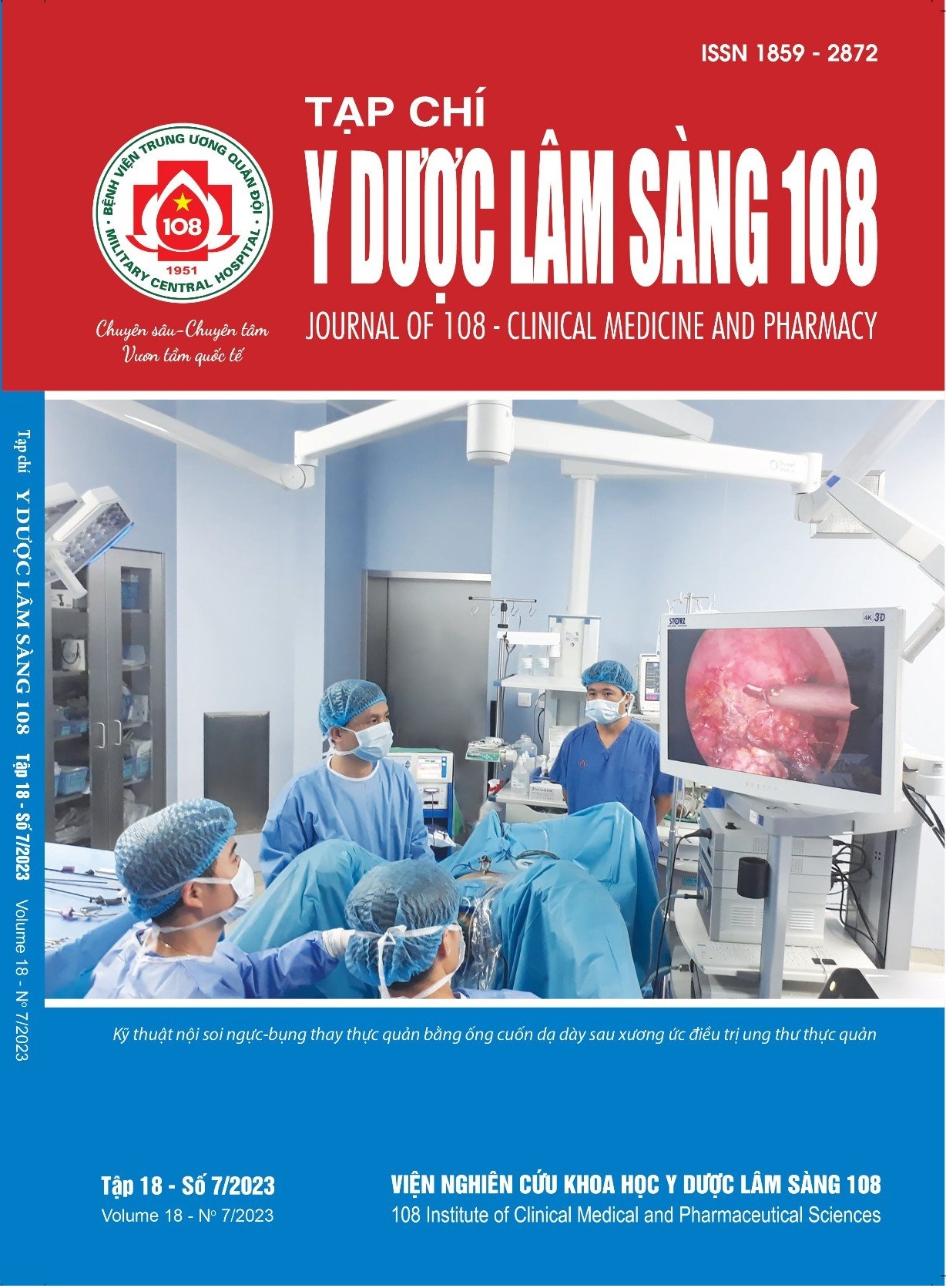The role of delayed phase computed tomography in evaluating solitary pulmonary nodules in patients with surgical treated patients
Main Article Content
Keywords
Abstract
Objective: To determine the role of multi-slice computed tomography with delayed phase contrast injection in evaluating solitary lung nodules. Subject and method: 91 patients with solitary lung nodules on computed tomography were confirmed by histopathological results after surgery at the National Lung Hospital from January 2021 to December 2022. Method: A prospective, cross-sectional study. Result: The mean age was 56.3 ± 12.1 years old. The most common age group was 50-69 years old. Male/Female ratio ~ 1.2:1. Benign nodules accounted for 25.3%, malignant nodules accounted for 74.7%. Nodules oval 67.0%, round 23.1%, polyarthral 5.5% and amorphous 4.4%. 83.5% solid nodule, 14.3% semi-solid nodule, 2.2% ground glass opacities nodule. Round nodules had a higher rate of benign than other types of nodules, while amorphous or polypoidal margins had the predominant rate of malignancy (75% and 100.0%). The overall average size was 20.4 ± 5.1mm, nodules with the diameter range 15-30mm were mostly malignant. Most of the malignant nodules had strong enhancement (59.3%). Delayed phase multislice computed tomography had sensitivity 92.6%, specificity 86.9%, and 91.2% accuracy. Conclusion: Delayed phase multislice computed tomography with contrast injection has high value in the differential diagnosis of a benign or malignant lung nodule.
Article Details
References
2. Webb WR, Higgins SB (2017) Thoracic Imaging: Pulmonary and Cardiovascular radiology. Philadelphia, PA 19106 USA.
3. Yang L, Zhang Q, Bai L (2017) Assessment of the cancer risk factors of solitary pulmonary nodules. Oncotarget 8(17): 29318-29327.
4. Elena GG, Juan José AJ, José SP (2018) Best protocol for combined contrast-enhanced thoracic and abdominal CT for lung cancer: A single-institution randomized crossover clinical trial. American Journal of Roentgenology 210: 1226-1234.
5. Feng G, Ming L, Yingli S, Li X, Yanqing H (2017) Diagnostic value of contrast-enhanced CT scans in identifying lung adenocarcinomas manifesting as GGNs (ground glass nodules). Medicine (Baltimore) 96(43).
6. Soardi GA, Simone P, Motton M (2015) Assessing probability of malignancy in solid solitary pulmonary nodules with a new Bayesian calculator: improving diagnostic accuracy by means of expanded and updated features. Eur Radiol 25: 155-162.
7. Dabrowska M, Krenke R, Korczynski P, Maskey WM, Zukowska M et al (2015) Diagnostic accuracy of contrast-enhanced computed tomography and positron emission tomography with 18-FDG in identifying malignant solitary pulmonary nodules. Medicine (Baltimore) 94(15): 666.
8. Winer-Muram HT (2006) The solitary pulmonary nodule. Radiology 239(1): 34-49.
9. Korst RJ, Kansler AL, Port JL, Lee PC, Altorki NK (2006) Accuracy of surveillance computed tomography in detecting recurrent or new primary lung cancer in patients with completely resected lung cancer. Ann Thorac Surg 82(3): 1009-1015; discussion 1015.
10. Seemann MD, Staebler A, Beinert T, Dienemann H (1999) Usefulness of morphological characteristics for the differentiation of benign from malignant solitary pulmonary lesions using HRCT. Eur Radiol 9(3): 409-417.
 ISSN: 1859 - 2872
ISSN: 1859 - 2872
